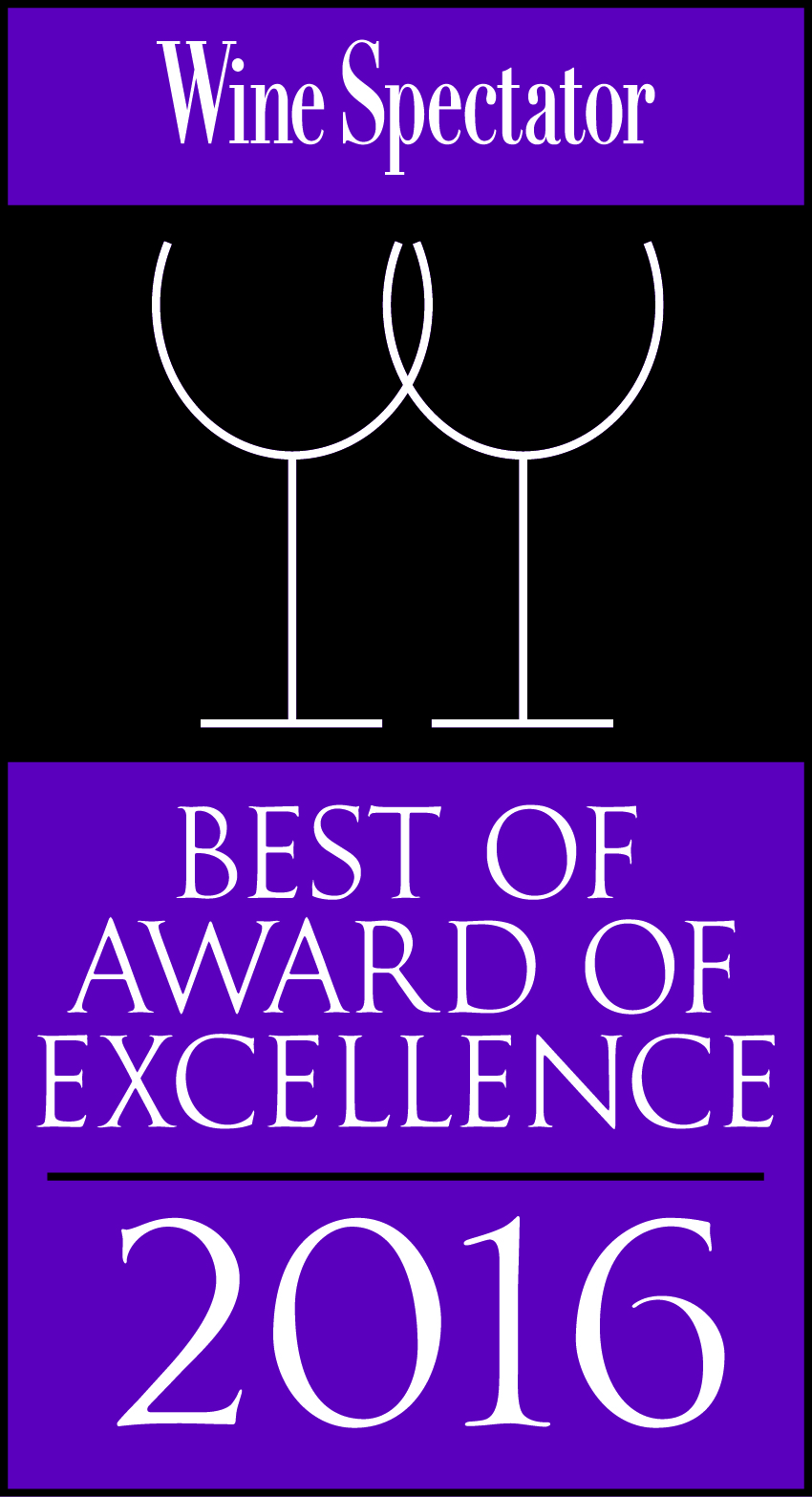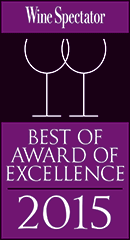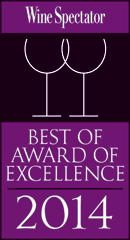Fine Wine, Poor Returns
By THOMAS O. RYDER
Growing up in Alexandria, a small town in Louisiana, the closest thing to wine in my house was Old Crow bourbon, a distillate that would melt the tar on roads. I discovered wine with my wife, Darlene. We couldn’t afford Scotch or bourbon, which were the social beverages of the moment at Louisiana State University, so we drank wine as an affordable alternative. Our favorites — I kid you not — were Ripple, Thunderbird, and Mogen David. When we graduated and started receiving regular paychecks, we switched to Almaden Cabernet Sauvignon and our lives began to change.
Cabernet was different and better, and I started to study wine much as I once had studied baseball cards. I began buying interesting wines and tasting them with Miss Darlene and friends when we moved to New York in the early ’60s. My purchases exceeded the speed with which we drank them, and so the collection and a life-long passion began. My goal was to create a great wine cellar to drink through the years with close family and friends. In those days it never occurred to me that wine might be an “investment.”
It is now 45 years later, and I am in phase two of a deaccession plan for my wine collection. Phase one, in 2007, was a sale of several thousand bottles for close to $2 million. In early spring of this year a team from Sotheby’s took another 987 bottles from my cellar. This time the wine experts at Sotheby’s estimated that the lot of 987 wines would bring in $70,000 to $100,000 at auction this fall.
I was disappointed. I would lose some money on this sale, something I’m not accustomed to with wine. But that simple fact speaks volumes about how the fine-wine market has evolved — and where it is likely to go in the future.
Fine wine has ceased being an elegant beverage to drink with a great dinner. It has become a glittering trophy. Could any rational person, even an absurdly wealthy one, drink a $15,000 bottle of wine with a clear conscience? That’s $3,700 per six-ounce glass. Not even I, in my craziest wine phase, would ever go that far. But, I sure would sell it to a greater fool. Happily, in the past few years, a fantastic crop of them has popped up, as hedge-fund managers and Internet zillionnaires bid for the best vintages against the status-seeking ambitions of the newly rich in Russia and China.
Publishing guru Thomas O. Ryder, and some rather pricey juice.
Great for us holding low-cost inventory, but it’s even better for the makers of First Growth (Premier cru) Bordeaux, which simply means a handful of the absolute best chateaux. The buying frenzy for these wines has allowed the producers to increase retail prices from $300 per bottle in the great 2000 vintage to $1,000-$1,500 or more in the heralded 2009 vintage.
INEVITABLY, THE TROPHY-HUNTERS have also begun to discover Burgundies, an elixir produced in much smaller quantities, and their prices are now soaring. The Sotheby’s experts who examined my remaining few thousand bottles took particular note of the Burgundies I began concentrating on in the ’90s. They noted that a single case of three magnums of 2005 Romanee Conti, which I purchased for $30,000 three years ago, could bring almost as much at auction as all of the 987 bottles from my cellar they will auction this fall.
It is all too irrational to be sustainable. Collectors who buy at these prices are unlikely to make money on their purchases, even as the private bankers hail wine as its own investment class. So, before you all get caught up in this mania, let me share some lessons about how I turned a modest wine cellar into a stash of bottles worth a few million dollars. (For more tips, go to Barrons.com’s “How to Build a Wine Cellar.”)
I started in 1970 on a trip to Napa Valley with the purchase of a case each of Louis Martini Reserve Cabernet and Beaulieu Vineyards George de lLatour Private Reserve, both from the great ’68 vintage in Napa. Two years later I helped start a small publishing company in Palo Alto, and I spent my weekends over three or four years traveling the back roads of California getting to know vintners and their products.
In those days, the California wine world was a simpler place. You could sit with legendary characters like Joe Heitz, Charlie Wagner, Warren Winiarski, and Paul Draper and taste and discuss their wine. I bought a lot of it. In the early ’70s I continued my education, taking vacation trips to Bordeaux, Burgundy, and the Rhone region, tasting not just the wine but food in many of France’s greatest restaurants.
By the early ’80s, I’d say I was a pretty knowledgeable collector and confident that I had the right strategy — “best wines, best years.” So, when Robert Parker created a frenzy by calling the ’82 Bordeaux vintage the greatest of his lifetime, I was ahead of the rush. I bought multiple cases of Petrus for $50 per bottle, and multiple cases of First Growths for $30 per bottle. I also bought deeply in the ’83, ’85, ’86, ’89, ’90, ’95, ’96, and 2000 vintages from Bordeaux. I developed a love affair with Rhone. I bought Cote Roti from Guigal; Hermitage from Jaboulet, Chave, and Chapoutier; and Chateauneuf-du-Pape from Rayas, Bonneau, Beaucastel, and Caillou. I bought the ’78, ’85, ’88, ’89, ’90, and ’98 vintages in quantity. I had in my cellar an ocean of “100 point” wines, the maximum points critics bestow on a wine.
Fifteen years into my hobby I began to feel like a genius. Wines I had bought, like the ’82 Petrus for $50, were selling at auction for over $1,000 per bottle. The entire portfolio seemed to have soared in value, as fine wines became fashionable and a secondary market developed. Then this “genius” began to stray from his sensible strategy.
I expanded my sights, studying Italian and Australian wines, and dessert wines from Germany, Portugal, and Sauternes. I pored over the literature — especially Robert Parker’s newsletter, the Wine Advocate, and the Wine Spectator — and became obsessively determined to own every great wine being made. I lost my discipline and made “investing” mistakes. The only upside: We wine collectors forget our mistakes by drinking them.
But then an epiphany led to my decision to stop collecting. The moment came, at the start of the millennium, when I purchased a rather large insurance policy on Darlene’s life and mine. We were finally confronted with the mathematics of our mortality. We had enough great wine for several bottles a day for the rest of our lives, an opportunity which, if acted upon, would substantially shorten the time we had left on this earth.
Sobering enough, but then came the 2005 Bordeaux vintage. With prices for First Growths starting at more than $600 per bottle and going to well over $1,500, I was offended by the sheer arrogance and greed of it. This was less a moral judgment and more an investment thesis. I believed wealthy French wine makers had taken the profit potential from us poor wine collectors, and it infuriated me that they had finally wised up. I shut my wallet. I have not bought another bottle of Bordeaux since the 2003 vintage, and I don’t plan to. I prefer safer investments like pork-belly futures at this stage of my life.
Inevitably, I came to that point in life when disposing of my stash became the logical next step. The first phase of our deaccession plan came after Hurricane Katrina destroyed so much of our native Louisiana. Darlene and I were heartbroken by the devastation and hardship and decided to do what we could. The plan was to sell some of our wine, especially older Bordeaux, which had become too expensive to drink, and find appropriate ways to give money to help Louisiana. Sotheby’s took several thousand bottles from my cellar. They sold for $1.7 million at a rare single-cellar sale in September 2007.
Good timing. The sale was the ultimate reckoning of my financial success as a collector. The ’82 Petrus purchased for $50 sold for $4,750 per bottle. The ’82 Lafite Rothschild, purchased for $30, sold for $2,250. Very rare magnums of ’74 Heitz Martha’s Vineyard Cabernet, purchased with great trepidation for $50, finally sold for almost $7,000. There were dozens of cork-popping results in the sale.
But, most wine collections are like a mutual-fund portfolio: You’ve got your winners, and you’ve got your losers. The former you celebrate, the latter you forget. Bordeaux wines were a huge success. Australian wines were a bust, except for Grange Hermitage. My Ports, so tasty when sipped with a ripe Stilton, ended in the red. The Rhones were pretty good, with some outsize gains on individual lots. California Cabernets were a huge disappointment. They were a small net contributor because I had bought so much iconic wine well, but they generally brought ridiculously low prices compared with my sense of their worth.
After receiving the initial estimates from Sotheby’s for the 2007 auction — which proved startlingly accurate — I removed many California Cabernets from the sale, preferring to enjoy them myself at those prices. I believed then and now that well-kept, older California Cabernets from great makers in good vintages are the best wine values in the world.
The Sotheby’s team saw a perfect example of this when I served them two great wines at lunch at my home. The first was an ’82 Lafite Rothschild, the heralded First Growth that traded in my auction for $2,250 per bottle. It was rich with dark fruits and cedar and the kind of balance one expects of a great wine.
I suspect that my guests had low expectations as I opened the second bottle, a ’68 Beaulieu Vineyards Georges De Latour Private Reserve Cabernet from California, one of the first wines I ever bought in case volume and one of the greatest wines I have ever tasted. As I poured the wine, its perfume filled the room and an almost reverential hush lingered as we tasted a truly fabulous wine that humbled the Lafite. Its ripe, deep chocolate-cherry flavor and satiny finish was simply stunning and memorable. This Californian wine was estimated to sell for only $100 a bottle at the 2007 auction. No surprise: I kept all I had.
I GOT ANOTHER REALITY CHECK. As I reviewed my records postauction, my enthusiastic impressions of financial success were diminished by the hard facts. Unlike a stock portfolio, wine collections have significant “seepage,” which is the tendency of great wines to disappear, as owners taste them to make sure they haven’t spoiled. While improving the general timbre of life, it really hurts financial returns in wine collecting when one drinks the profits.
I also conveniently forget that I pay sales tax and, often, shipping charges. The cost of careful cellaring over time is hardly insignificant; professional storage costs about $25-$30 per case, per year. Remember, too, that the $1.7 million in the publicly announced sale was reduced by a well-deserved buyer’s premium of about 20% paid to Sotheby’s. And then there are the taxes you pay. Not the capital-gains rate of 15% one gets with stocks, but a “collectibles” rate of 28%.
This was a huge issue for us. I assumed we could gift the collection in a way that would benefit post-Katrina Louisiana, claiming its value as a deduction, just as we would when gifting stocks. Not so. With a wine collection, if one donates to a charity, the deduction is limited to its original cost basis, unless the charity can legitimately use the wine in its charitable activities. The alternative is to sell the wine and donate the cash proceeds, but this results in a 28% tax on the gain. That’s quite a difference.
Here, then, the upshot: Our gains looked impressive until the taxes were paid and the gains were measured over the years that our capital had been employed. In the end, I estimate at best we earned a single-digit net return. Let’s just say my efforts financed a lavish drinking habit, but I would not have made the mutual-fund manager’s hall of fame. The portfolio to be sold this fall includes many more of my investment “mistakes.” I will lose a little money on this round of sales, and I can’t deduct the losses.
I have no regrets. We were wildly successful in meeting our original goal, and we have had a remarkably great time doing it. We have truly great wines that have matured with us, and we drink them with family and friends. Darlene and I are now doing so with frequency, enthusiasm, and not an ounce of guilt. Our children seem ever more interested in sharing meals with us, and we seem to be gaining new friends. That’s OK, too.
http://online.barrons.com/article/SB50001424053111904881404577603212059123098.html?mod=BOL_hpp_mag#articleTabs_article%3D1
Seafood Lovers and guests looking for lighter meal laud Yats Restaurant in Angeles City Clark Philippines for its wide selection of excellent seafood dishes on the menu of the best restaurant in Clark Pampanga. Many guests have grown tired with meat diet and look to this fine dining restaurant in Pampanga for a nice seafood dinner paired with good vintage wine. Food and wine lovers laud Yats as the best restaurant in Angeles City Pampanga to enjoy steaks and seafood, paired with fine vintage wines, a truly memorable fine dining treat for the whole family.
As wine become more and more popular in Manila, Subic, Pampanga Angeles City and Clark Philippines, guests are happy to hear of special BYOB evenings in the best restaurant in Clark Pampanga. Waiving corkage fee is only part of the treat for this special dinner. Yats Restaurant and Wine Bar prepares special wine-friendly menu for BYOB dinners. Guests can share their bottles with other guests or opt to dine in the privacy of their own individual tables.
Looking for a party venue in town?
Clearwater Resort and Country Club is one of the ideal venues for birthday party because it is a risk free venue. Not only Birthday Parties but also a good place to enjoy family reunion. A good place to celebrate special occasions. Clearwater Resort and Country Club is one of the resorts in Subic Clark Angeles City Pampanga or near Manila with activity amenities, place that are nice for celebration. It is one of North Luzon Philippines’ top hotels that is trouble free, risk free, and a nice place to have rest in Subic. A well-recognized and interesting hotel.
Yats Restaurant is the best restaurant for special dinner, best restaurant for dinner with friends near Manila, also the best place to celebrate special events.
Famous Restaurant in Pampanga, a place to dine with friends in Clark, cozy restaurant with a nice ambience, a nice function place for special occassions
Are you looking for an attractive restaurant or a nice place to eat with friends in Clark, Angeles City Pampanga? Yats Restaurant and Wine Bar is a restaurant with good food and good wines for dinner located at Clark Angeles City Pampanga. Perfect for exclusive dinner venues for groups, recommended for private dinner in Philippines. A Restaurant in Clark for business dinner meeting. Private dinner place or dinner restaurant in Clark Subic Near Manila Angeles City Pampanga. Yats Restaurant is one of the Good Restaurant in Pampanga Angeles City Clark near Manila. Yats Restaurant is one of the good restaurants in Pampanga, a restaurant with good food, a place that is nice for celebration, ideal for business dinner meeting, a good place to enjoy family reunion, and an attractive restaurant that serves good wines for dinner.
Korean tourists are not the only visitors to Angeles City, Clark Philippines that appreciate what this fine dining restaurant in Clark Pampanga is doing to make it easier for Asian tourists to enjoy fine dining in Clark. Tourists that are not very comfortable with European languages often find it a challenge to order from fine dining restaurants in Pampanga. This problem often prevents tourists to wine and dine in the best restaurant in Clark Pampanga. However, Yats Restaurant which is generally regarded as the best restaurant outside of Manila has changed all that and has just rolled out compact menus that are not only easy to order but also very friendly with wine.
For comments, inquiries and reservations click on Click here for inquiry and reservations
Restaurant@Yats-International.com
(045) 599-5600
0922-870-5178
0917-520-4401
Ask for Pedro and Rechel
Getting to this fine dining restaurant of Angeles City Clark Freeport Zone Pampanga Philippines
How to get to this fine-dining restaurant in Clark Philippines? Once you get to Clark Freeport, go straight until you hit Mimosa. After you enter Mimosa, stay on the left on Mimosa Drive, go past the Holiday Inn and Yats Restaurant (green top, independent 1-storey structure) is on your left. Just past the Yats Restaurant is the London Pub.
Yats Restaurant & Wine Bar
Mimosa Drive past Holiday Inn, Mimosa Leisure Estate,
Clark Freeport Zone, Pampanga, Philippines 2023
Manila Sales Office
3003C East Tower, Phil Stock Exchange Center,
Exchange Rd Ortigas Metro Manila, Philippines 1605
(632) 637-5019 0917-520-4393 Rea or Chay
For any assistance in planning and organizing a wedding ceremony, indoor or outdoor garden reception or to find other wedding service providers, Click here to contact us click here
For assistance in hotel and resort bookings in Clark, Pampanga, Philippines, log on to
http://www.HotelClarkPhilippines.com
To buy wine in Manila, Pampanga, Angeles City, Clark or Subic please log on to http://www. ClarkWineCenter.com
To inquire with the highly recommended beach resort hotel in Clark Pampanga visit http://www.ClearwaterPhililippines.com
For more information about Clark, Pampanga, Philippines log on to
http://www.ClarkPhilippines.com











